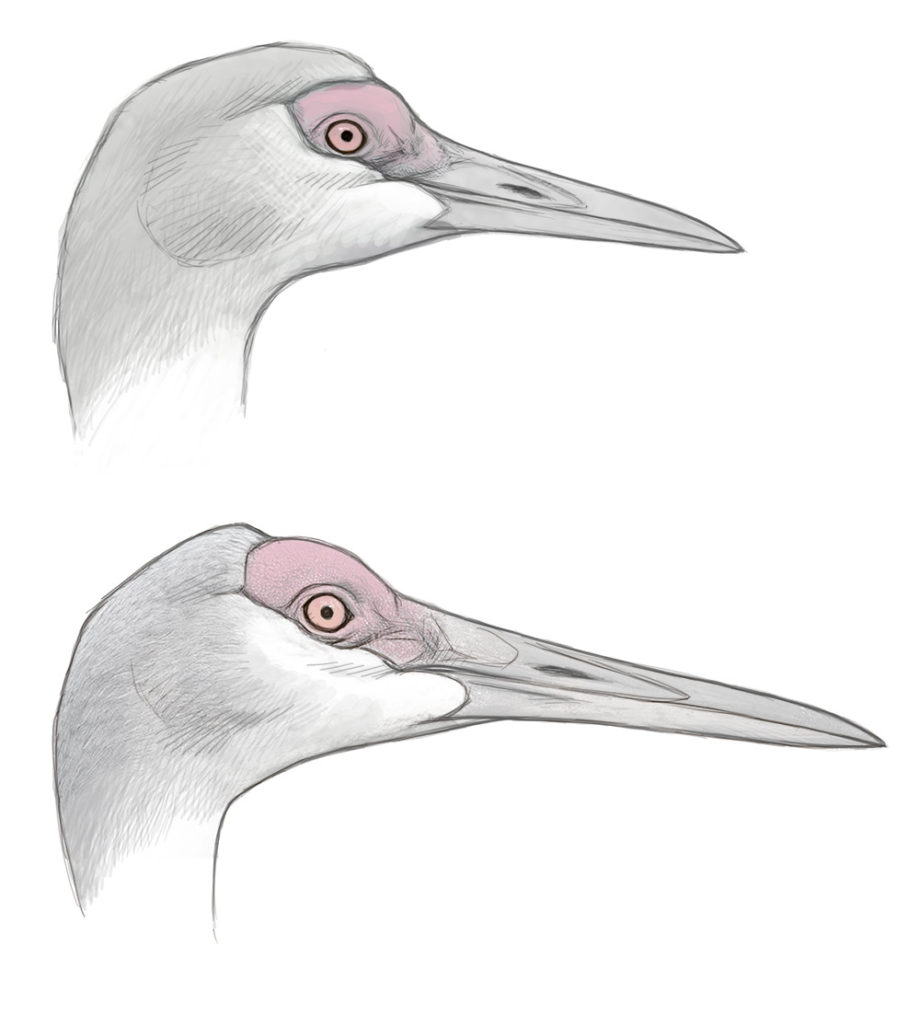
Here’s a new illustration I’ve done as part of some work on distinguishing the two subspecies groups of Sandhill Crane. Six subspecies of Sandhill Crane are generally recognized, but for field observers it’s more practical to assign birds to two subspecies groups: Lesser and Greater. The Greater subspecies group includes five of the named subspecies, nesting from southeastern Alaska and central Canada south to Cuba, and the Lesser group includes a single subspecies (canadensis) nesting in the far north across Canada and Alaska, and into Siberia. Detailed studies of morphology and genetics support the distinctiveness of these two groups, and they could even be candidates for full species.
As their English name implies, birds in these two groups differ in overall size, with most Lessers obviously smaller than most Greaters. In addition, Lesser has a proportionally shorter bill and legs, darker flight feathers, an overall slightly darker and duskier gray-brown color, and some differences in the details of head pattern. They also differ in voice, with Lesser sounding distinctly higher-pitched. Once a candidate is located by overall size and/or wing color, it’s best to focus on the details of bill and head to increase confidence in your identification.
As shown here, Lesser has a shorter and stubbier bill, usually less bare skin above and behind the eye (but some Greaters can have feathering very similar to the Lesser shown here), and a less obvious white band across the cheek below the eye.
It’s a tricky identification. All of these features are variable, some birds overlap and some show a mix of features. But the vast majority of individuals show a consistent set of features typical of either Greater or Lesser, and can be identified with confidence.


I wondered if you could look at this photo and tell me if I caught a shot of Greater AND Lesser Sandhill Cranes? https://www.facebook.com/photo?fbid=10159474755631153&set=gm.3217391931830091
Super helpful – the bill length and the appearance of the crown are clear in your sketch.
Feathered hat above the eyes – probably lesser.
Red crown above the eyes – probably great.